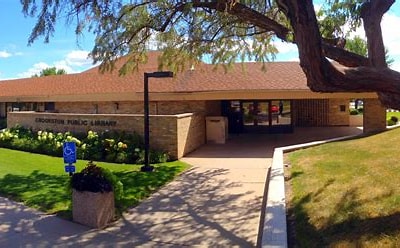The University of Minnesota Extension’s Emily Krekelberg offers tips for reducing fire risk on the farm. The information is below –
Farms present many fire risks, and especially during drought it is critical to pay attention to these risks and take steps to mitigate them. An awareness of potential fire hazards on your farm as well as a plan to address them are key components in protecting your farm and your people. While these tips are particularly useful in times of drought (and increased fire risk), it’s also helpful to keep them in mind all year and in all weather patterns.
Fire Risk: People
The people in and around your farm—and their actions—may put your farm at risk for a fire. Make sure any tasks being performed that involve open flame, high heat, or flying sparks are completed by people who have experience with the task. In addition, ensure they are doing their work away from flammable materials, in a safe, well-ventilated area, and with a fire extinguisher nearby. Lastly, smoking around the farm should be discouraged, especially in areas with flammable materials and/or a lot of dust.
Fire Risk: Equipment
Farm equipment presents various fire risks. Improperly maintained equipment may send out sparks, overheat, or have an electrical malfunction. Properly maintaining equipment and having a fire extinguisher in every tractor and combine will help reduce fire risk. Additionally, be mindful of the conditions you are working in; dry field material can easily ignite from heavy friction and/or high heat. Also be aware of situations with heavy dust, which is also at risk of igniting.
Fire Risk: Facilities
The various buildings, barns, and bins around the farm can also pose fire risks. Like with equipment, proper and regular maintenance are crucial in reducing fire risk. In older buildings especially, electrical wiring and hookups should be checked, and necessary fixes and replacements made. Storage areas for flammable materials should be kept cool and well-ventilated. Facilities should also be cleaned regularly to decrease dust and other dry residues that may catch fire easily. Fire extinguishers should be kept nearby at several locations around the farm.
Mitigating Fire Risk
As stated above, fire extinguishers are critical on the farm to reduce fire risk. Being able to respond to fire situation quickly is key to preventing spread of the flames, especially in very dry conditions. Speaking of response, having an action plan in place should a fire occur is also crucial. Action plans should include emergency shut-off procedures, evacuation plans, and strategies for protecting livestock. Having a clear plan will allow you to respond quickly, should a fire occur on your farm. Lastly, being a responsible manager of your people, equipment, and facilities will keep your fire risk low.




